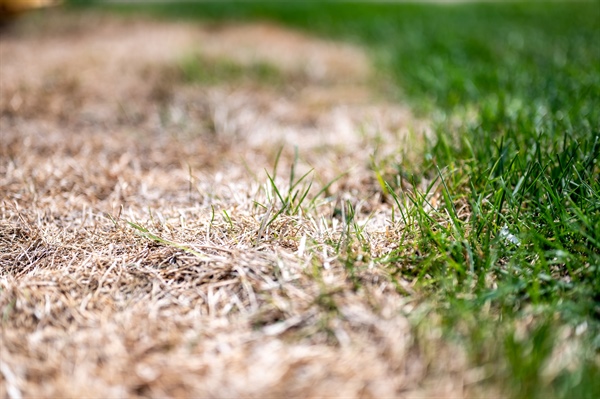How to Manage Winter Lawn Diseases in Minnesota: Tips and Solutions

Winter in Minnesota can be tough on lawns, with the cold temperatures, heavy snow, and fluctuating conditions creating a perfect environment for winter lawn diseases. Properly managing these diseases is crucial for maintaining a healthy and vibrant lawn come spring.
Whether you're a homeowner looking to keep your yard in top shape or simply interested in lawn care, understanding how to tackle common winter lawn diseases is essential. In this guide, we’ll explore the most prevalent lawn diseases that occur during Minnesota winters and how to manage them effectively.
We’ll delve into several important aspects, such as identifying the most common winter lawn diseases in Minnesota, effectively treating snow mold, understanding the benefits of winter fungicide applications, and more. By following these expert tips, you can help protect your lawn from the harsh effects of winter and ensure it remains lush and green as the seasons change.
What Are the Common Winter Lawn Diseases in Minnesota?
Minnesota's cold climate creates an environment where certain lawn diseases thrive during the winter months. The most common winter lawn diseases include snow mold, winter desiccation, and red thread. Snow mold, in both gray and pink varieties, develops under snow cover and can cause extensive damage to your grass. Red thread typically appears in cooler temperatures and high humidity, often showing up as pinkish-red threads in your lawn.
Another common disease is winter desiccation, which occurs when dry winter winds draw moisture from the grass blades, causing them to dry out and become brittle. This is particularly damaging in areas where snow cover is inconsistent. Identifying these diseases early is crucial for minimizing damage and ensuring your lawn recovers in spring.
How to Identify and Treat Snow Mold?
Snow mold is one of the most common winter lawn diseases in Minnesota, developing under snow cover and becoming apparent as the snow melts. There are two types: gray snow mold and pink snow mold. Gray snow mold tends to appear as circular, grayish patches ranging from a few inches to several feet in diameter, while pink snow mold has a pinkish hue and is often more damaging, as it affects both the grass blades and roots.
Treatment involves gently raking the affected areas to help the grass dry out and applying a fungicide if the infection is severe. It’s essential to avoid walking on or mowing the affected areas while they’re wet, as this can spread the disease further. Mowing your lawn shorter before the first snowfall can also reduce the risk of snow mold developing.
To ensure optimal lawn care during winter, consider superior lawn care services from Ben's Lawn Care to ensure your lawn is protected and treated effectively for snow mold.
What Are the Benefits of Winter Fungicide Applications?
Applying fungicides in late fall can be an effective preventive measure against winter lawn diseases such as snow mold. These applications create a protective barrier that helps to prevent fungal spores from taking hold during the winter months. By acting as a shield, fungicides reduce the severity of disease outbreaks and help ensure your lawn recovers quickly once spring arrives.
It’s important to choose the right fungicide and apply it correctly. Timing is critical, with applications ideally made before the first snowfall when the ground is not yet frozen. This ensures that the fungicide can penetrate the soil and protect your lawn throughout the winter. For homeowners who want to take proactive steps, using professional lawn care services can be beneficial for ensuring fungicide applications are done properly.
How to Prevent Winter Diseases Through Proper Lawn Care?
Preventing winter lawn diseases starts with maintaining a healthy lawn year-round. Regular mowing, fertilizing, and aeration can help strengthen your grass, making it more resistant to disease. In the fall, it's essential to clear away leaves and debris that can create a damp environment conducive to fungal growth.
Another critical step is to avoid excessive nitrogen fertilization late in the season, as this can promote rapid, lush growth that’s more susceptible to winter diseases. Properly winterizing your lawn by mowing it to the recommended height and ensuring it's well-watered before the ground freezes can also prevent issues like winter desiccation.
How to Repair Disease Damage in the Spring?
As spring arrives, it's time to assess and repair any damage caused by winter lawn diseases. Begin by lightly raking the affected areas to remove dead grass and debris. This will help your lawn breathe and promote new growth. Overseeding can be an effective way to repair thin or bare patches, as it introduces new, healthy grass to the affected areas.
Applying a balanced fertilizer will also give your lawn the nutrients it needs to recover and strengthen. Watering the lawn appropriately, especially during dry spells, will help encourage growth and prevent further stress on the grass. Consistent care during the spring will help your lawn bounce back from winter diseases and thrive in the warmer months.
Get Expert Help with Managing Winter Lawn Diseases
Managing winter lawn diseases can be challenging, but with the right approach, you can protect your lawn and ensure it stays healthy throughout the colder months. Ben's Lawn Care has the expertise and knowledge to help you tackle these issues effectively.
Whether you're dealing with snow mold, winter desiccation, or any other winter lawn disease, we offer tailored solutions to meet your needs. From applying the right fungicides to offering guidance on proper lawn care techniques, Ben's Lawn Care is here to help you maintain a beautiful lawn all year round.
If you're ready to take the next step in protecting your lawn, we invite you to reach out to us for personalized assistance. You can get a free estimate from our experts today, or for more information, call Ben's Lawn Care at 763-258-9340 or send us a message online!